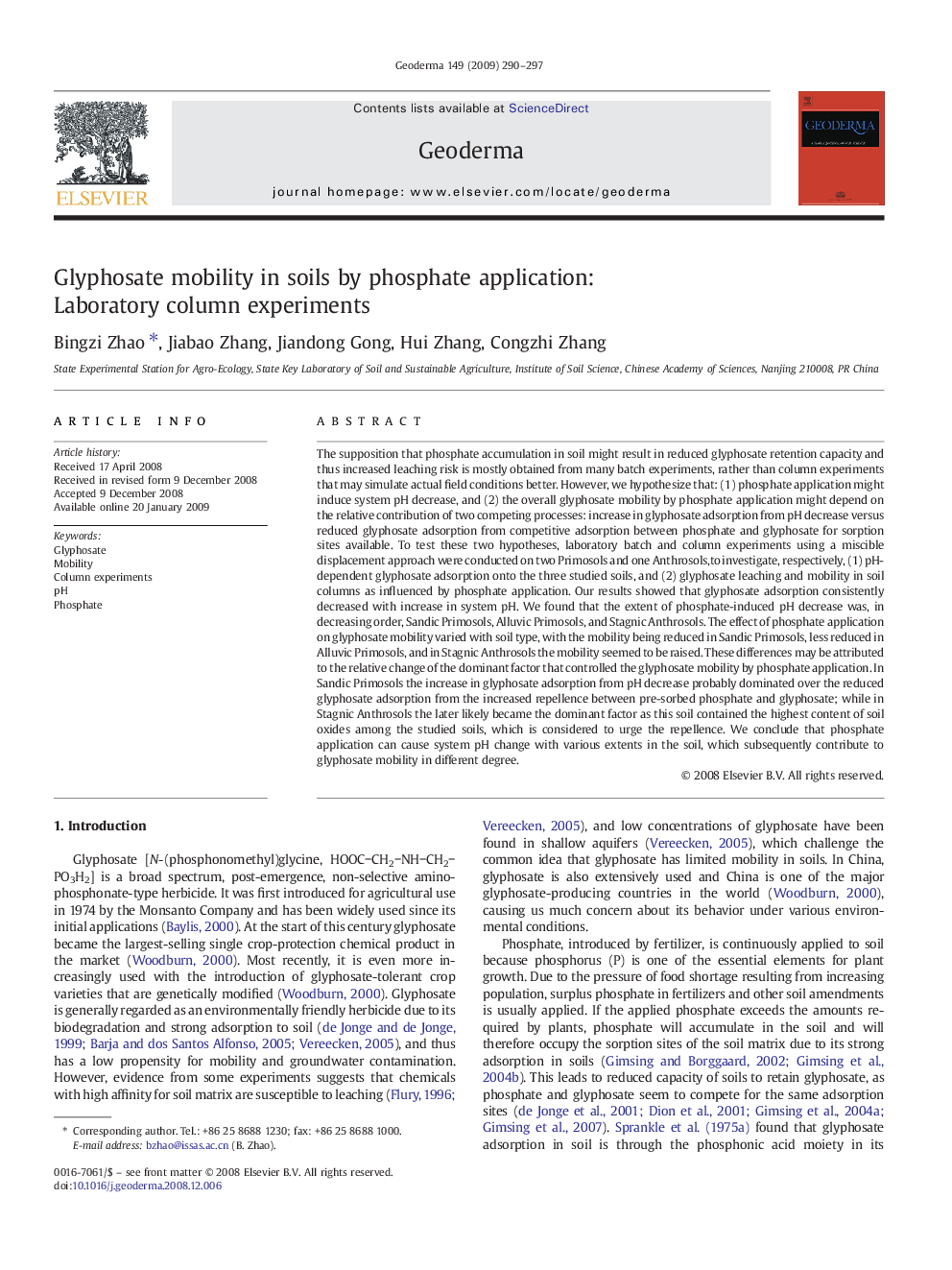| Article ID | Journal | Published Year | Pages | File Type |
|---|---|---|---|---|
| 4574583 | Geoderma | 2009 | 8 Pages |
The supposition that phosphate accumulation in soil might result in reduced glyphosate retention capacity and thus increased leaching risk is mostly obtained from many batch experiments, rather than column experiments that may simulate actual field conditions better. However, we hypothesize that: (1) phosphate application might induce system pH decrease, and (2) the overall glyphosate mobility by phosphate application might depend on the relative contribution of two competing processes: increase in glyphosate adsorption from pH decrease versus reduced glyphosate adsorption from competitive adsorption between phosphate and glyphosate for sorption sites available. To test these two hypotheses, laboratory batch and column experiments using a miscible displacement approach were conducted on two Primosols and one Anthrosols,to investigate, respectively, (1) pH-dependent glyphosate adsorption onto the three studied soils, and (2) glyphosate leaching and mobility in soil columns as influenced by phosphate application. Our results showed that glyphosate adsorption consistently decreased with increase in system pH. We found that the extent of phosphate-induced pH decrease was, in decreasing order, Sandic Primosols, Alluvic Primosols, and Stagnic Anthrosols. The effect of phosphate application on glyphosate mobility varied with soil type, with the mobility being reduced in Sandic Primosols, less reduced in Alluvic Primosols, and in Stagnic Anthrosols the mobility seemed to be raised. These differences may be attributed to the relative change of the dominant factor that controlled the glyphosate mobility by phosphate application. In Sandic Primosols the increase in glyphosate adsorption from pH decrease probably dominated over the reduced glyphosate adsorption from the increased repellence between pre-sorbed phosphate and glyphosate; while in Stagnic Anthrosols the later likely became the dominant factor as this soil contained the highest content of soil oxides among the studied soils, which is considered to urge the repellence. We conclude that phosphate application can cause system pH change with various extents in the soil, which subsequently contribute to glyphosate mobility in different degree.
